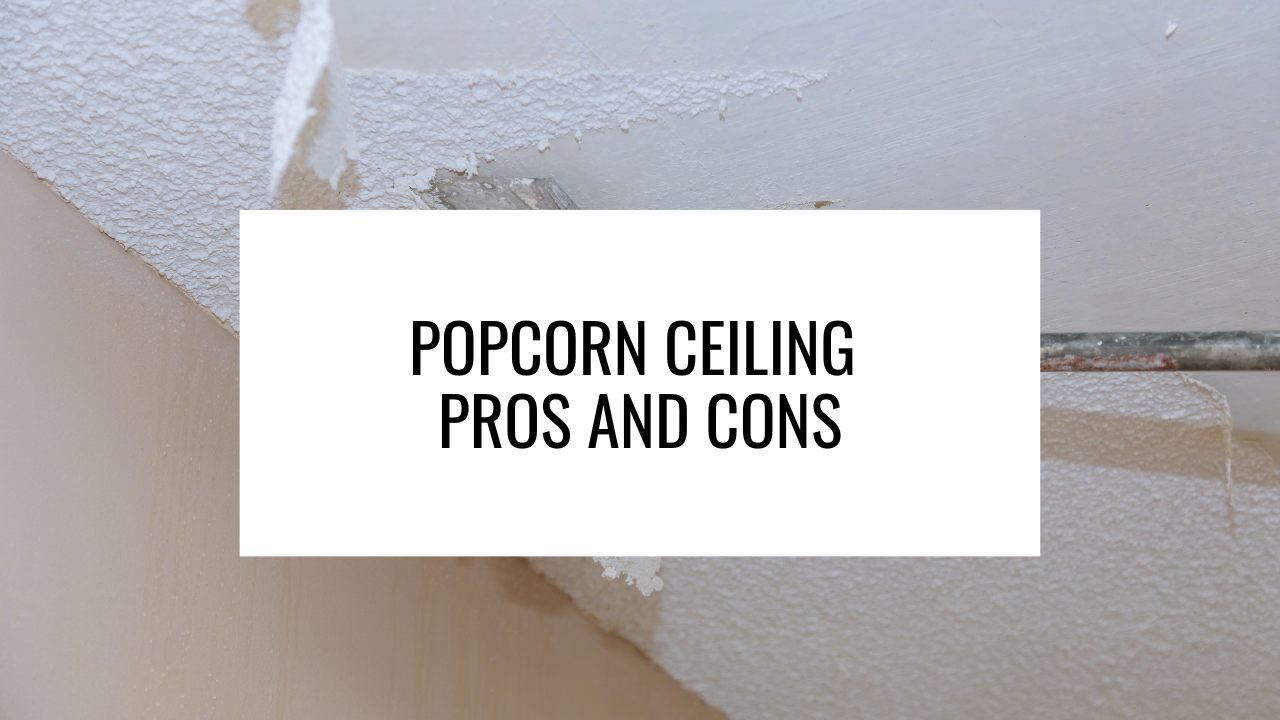Popcorn ceilings, also known as acoustic or textured ceilings, were once a popular choice in home design. Their bumpy texture added a unique aesthetic to many houses. However, over time, opinions on popcorn ceilings have changed, and homeowners are now questioning whether it’s time to bid farewell to this trend. In this blog post, we will explore the pros and cons of popcorn ceilings, allowing you to make an informed decision about whether it’s time for a change in your own home.
Pros of Popcorn Ceilings
- Noise Reduction and Acoustics: One of the main advantages of popcorn ceilings is their ability to dampen sound and improve acoustics within a room. The texture helps absorb and scatter sound waves, reducing echo and noise transmission between floors. This feature is particularly beneficial in large rooms or areas with high ceilings.
- Concealing Imperfections: Popcorn ceilings have a knack for hiding imperfections such as cracks, water stains, or uneven surfaces. Their textured appearance draws attention away from blemishes, making them an attractive option for older homes with less-than-perfect ceilings. It can save you the time and expense of extensive repairs or re-plastering.
- Easy Application: Another benefit of popcorn ceilings is their relatively easy application process. Contractors use a spray technique to apply the textured material, allowing for quick and efficient installation. This can be advantageous if you’re looking to renovate a space on a tight schedule or budget.
Cons of Popcorn Ceilings
- Dated Aesthetic: One of the most significant drawbacks of popcorn ceilings is their association with an outdated style. The texture was commonly used in homes built from the 1950s to the 1980s, giving them a retro feel that may not align with modern interior design trends. If you’re aiming for a more contemporary or minimalist look, a popcorn ceiling might hinder your overall aesthetic vision.
- Difficult Maintenance and Cleaning: Cleaning a popcorn ceiling can be a challenging task. Dust and debris tend to accumulate in the crevices and textures, making it difficult to achieve a pristine appearance. Traditional methods such as vacuuming or using a duster can dislodge the texture, causing it to fall off. Additionally, repairing or repainting popcorn ceilings can be complicated due to the textured surface, often requiring professional assistance.
- Potential Health Concerns: Popcorn ceilings installed before the late 1970s may contain asbestos, a harmful mineral fiber that poses health risks when disturbed. If your home was built during this period, it’s essential to have the ceiling tested for asbestos before considering any removal or renovation projects. Professional removal or encapsulation may be necessary if asbestos is present, adding to the overall cost and complexity.
Is It Time for a Change?
While popcorn ceilings have their advantages, the cons may outweigh the pros for many homeowners. If you’re considering updating your living space, removing the popcorn ceiling and opting for a smooth, more modern finish could be a wise choice. It can instantly refresh the ambiance and increase the value of your home.
Before embarking on any changes, assess the condition of your popcorn ceiling, its age, and the potential presence of asbestos. Consulting with professionals, such as contractors or asbestos abatement specialists, is crucial to ensure a safe and successful transition. They can guide you through the removal process or provide alternative solutions like covering the texture with a new layer of drywall.
Conclusion: Popcorn Ceilings
In summary, popcorn ceilings have their merits, such as noise reduction, concealing imperfections, and easy application. However, their dated appearance, difficult maintenance, and potential health concerns make them less favorable in today’s design landscape. If you’re looking to update your home and create a more modern and streamlined look, it may be time to bid farewell to the popcorn ceiling.
Contact our team at Sarson Painting to help you with your popcorn ceiling transition.

